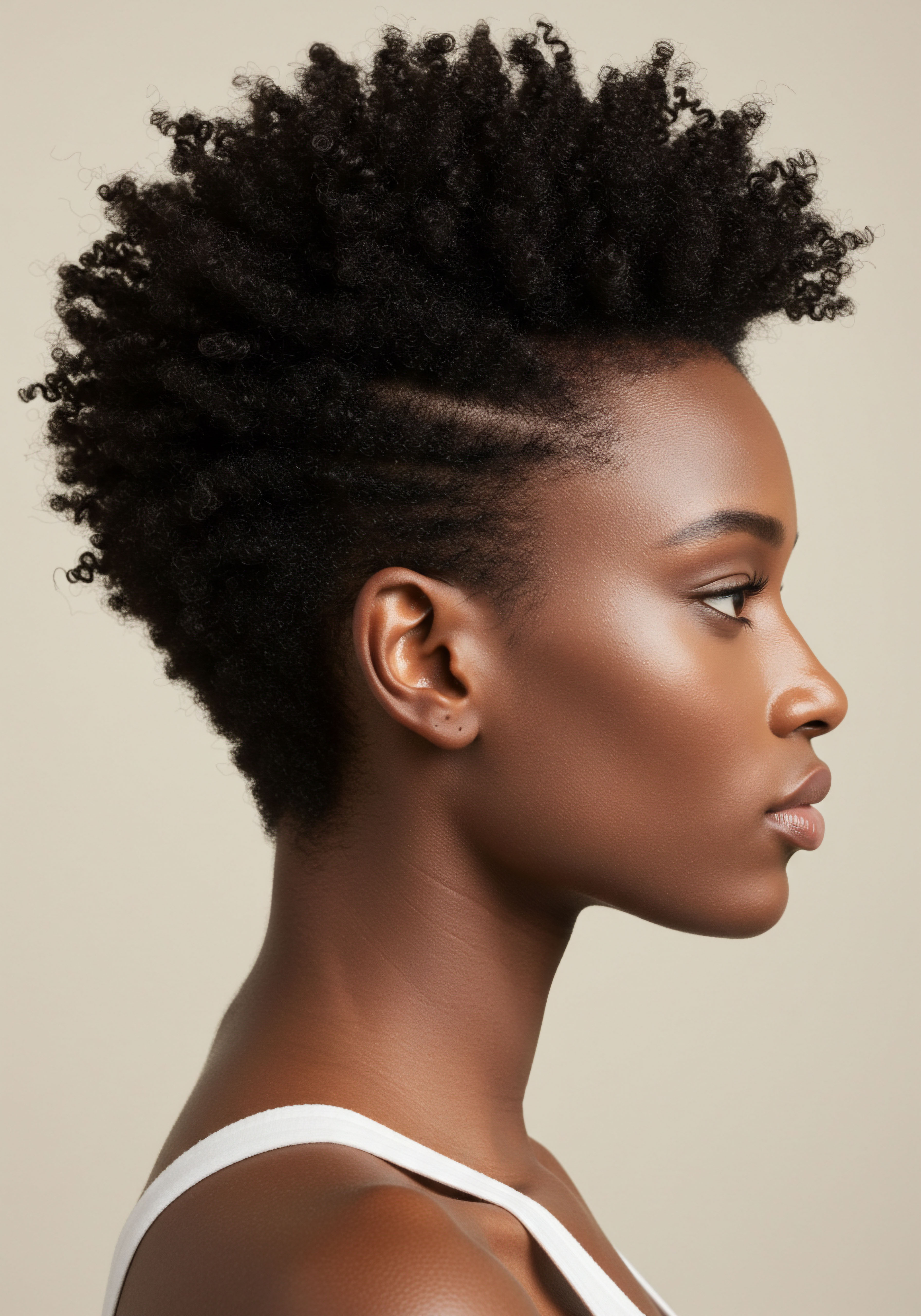
Roots
The quiet hours of slumber, often perceived as a mere pause in our daily rhythms, conceal a profound orchestration of internal processes. Beneath the calm surface of a sleeping form, a delicate ballet of hormones unfolds, each influencing the very foundations of our being. For those with coiled strands, a deeper appreciation of these nocturnal currents reveals how the body’s silent work during rest can shape the resilience and vibrancy of each curl, coil, or wave. It is a contemplation that moves beyond superficial care, inviting us to consider the elemental forces that grant our hair its innate strength and unique character.

The Hair Follicle’s Nocturnal Rhythm
Hair, a dynamic biological system, operates within its own precise timeline, a cycle of growth, rest, and renewal. This cycle, while largely autonomous, remains subtly attuned to the broader rhythms of our body, particularly those governed by sleep. The hair follicle, the tiny organ from which each strand springs, does not simply shut down when we close our eyes.
Rather, it enters a phase of significant metabolic activity, a period of rebuilding and consolidation. This restorative phase is heavily influenced by the hormonal landscape that shifts as we drift through the stages of sleep.
Consider the follicle as a miniature factory, ceaselessly producing the protein known as Keratin, the very building block of our hair. During deep sleep, the production lines within this factory receive crucial signals, prompting them to work with a renewed vigor. The integrity of the hair shaft, its ability to resist external pressures and maintain its structural form, begins here, deep within the scalp, under the silent guidance of the body’s most restorative hormones.
Sleep provides a crucial period for the hair follicle’s restorative work, influenced by the body’s changing hormonal landscape.

Hormonal Messengers of Sleep
Among the many chemical messengers that ebb and flow during sleep, certain hormones stand out for their direct or indirect influence on hair biology. Two prominent players are Melatonin and Growth Hormone, each with distinct yet complementary roles in supporting cellular repair and regeneration. A third, Cortisol, though often associated with stress, also exhibits a circadian pattern that affects hair health, with its levels typically dropping during early sleep and rising towards morning.
- Melatonin ❉ This hormone, widely recognized for its role in regulating sleep-wake cycles, is also a potent antioxidant. Its presence during the night protects cells from oxidative stress, a process that can damage hair follicles and impede healthy growth.
- Growth Hormone ❉ Secreted primarily during the deepest stages of sleep, this hormone is a powerful anabolic agent, meaning it promotes the growth and repair of tissues throughout the body, including those within the hair follicle.
- Cortisol ❉ While elevated cortisol levels can be detrimental to hair, its natural decline during the initial hours of sleep allows for a more favorable environment for cellular repair and reduces inflammation that might otherwise compromise follicle function.
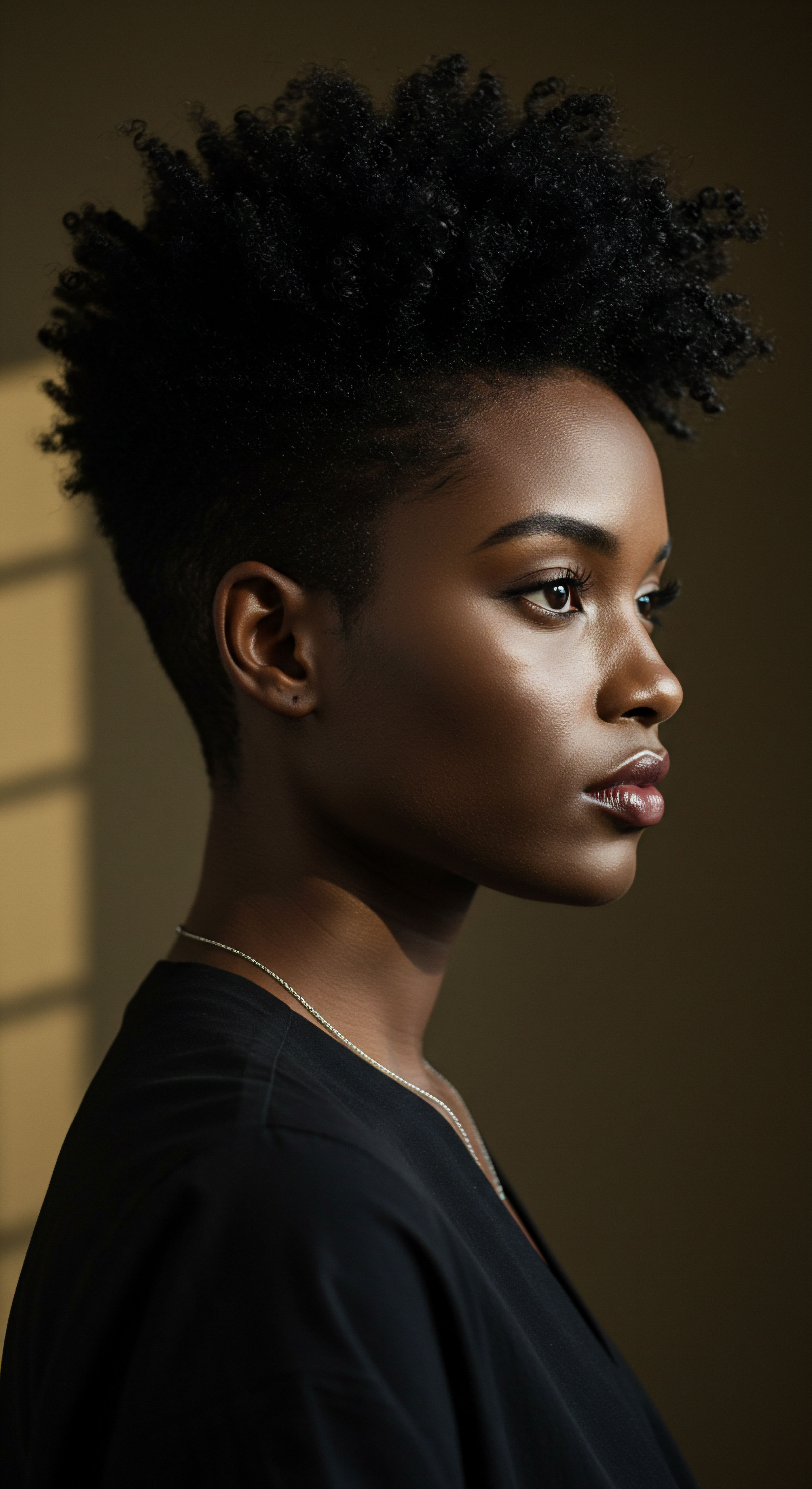
How does Melatonin Shield Hair Strands?
Melatonin’s protective qualities extend directly to the hair follicle. Research indicates that melatonin receptors are present in human hair follicles, suggesting a direct line of communication between this sleep hormone and the cells responsible for hair production. As an antioxidant, melatonin helps to neutralize free radicals, unstable molecules that can cause cellular damage.
This cellular defense is particularly important for coiled strands, which can be more susceptible to environmental stressors due to their exposed cuticle structure. A follicle shielded from oxidative harm is better equipped to produce strong, healthy fibers.
Consider the environmental aggressors our hair faces daily ❉ UV radiation, pollution, even the mechanical stress of styling. These factors generate free radicals. Melatonin, acting as a nocturnal guardian, helps to mitigate this damage, allowing the hair-producing cells to recover and maintain their integrity. This nightly renewal contributes to the overall resilience of the hair shaft, helping it resist breakage and maintain its natural elasticity.

Ritual
As we deepen our understanding of sleep’s quiet power, we begin to see how our nighttime practices become a conscious partnership with the body’s natural restorative work. It is here, in the gentle rhythm of evening preparations, that we can truly honor the intrinsic connection between our internal hormonal symphony and the tangible strength of our coiled strands. This section offers a guide to aligning our hair care practices with the body’s nocturnal repair processes, moving beyond simple product application to a more intentional approach to hair wellness.

Aligning Nighttime Care with Hormonal Cycles
The period of rest offers a unique window for hair care, a time when products can truly penetrate and work without the interference of daily styling or environmental exposure. Understanding the peak activity of hormones like growth hormone during deep sleep prompts us to consider what our hair needs most during these hours. Is it deep moisture, protein replenishment, or scalp stimulation? Tailoring our evening regimen to support these natural processes can significantly amplify their benefit.
For coiled strands, which often contend with inherent dryness and a tendency towards fragility, nighttime care is not merely an option; it is a cornerstone of maintaining their integrity. The unique structure of these hair types, with their elliptical cross-section and raised cuticles, means moisture loss can be more pronounced. Capitalizing on the body’s restorative hormonal environment during sleep provides an ideal opportunity to counteract this.
Nighttime hair care, when aligned with the body’s restorative hormonal processes, becomes a powerful tool for strengthening coiled strands.

Deep Conditioning and Protein Synthesis
The surge of growth hormone during non-REM sleep plays a significant part in protein synthesis throughout the body. Hair, being primarily composed of keratin protein, directly benefits from this anabolic state. Applying deep conditioning treatments or protein masks before bed can capitalize on this physiological readiness for repair. The hair shaft, primed by the body’s internal signals, may be more receptive to absorbing and utilizing these external reinforcements.
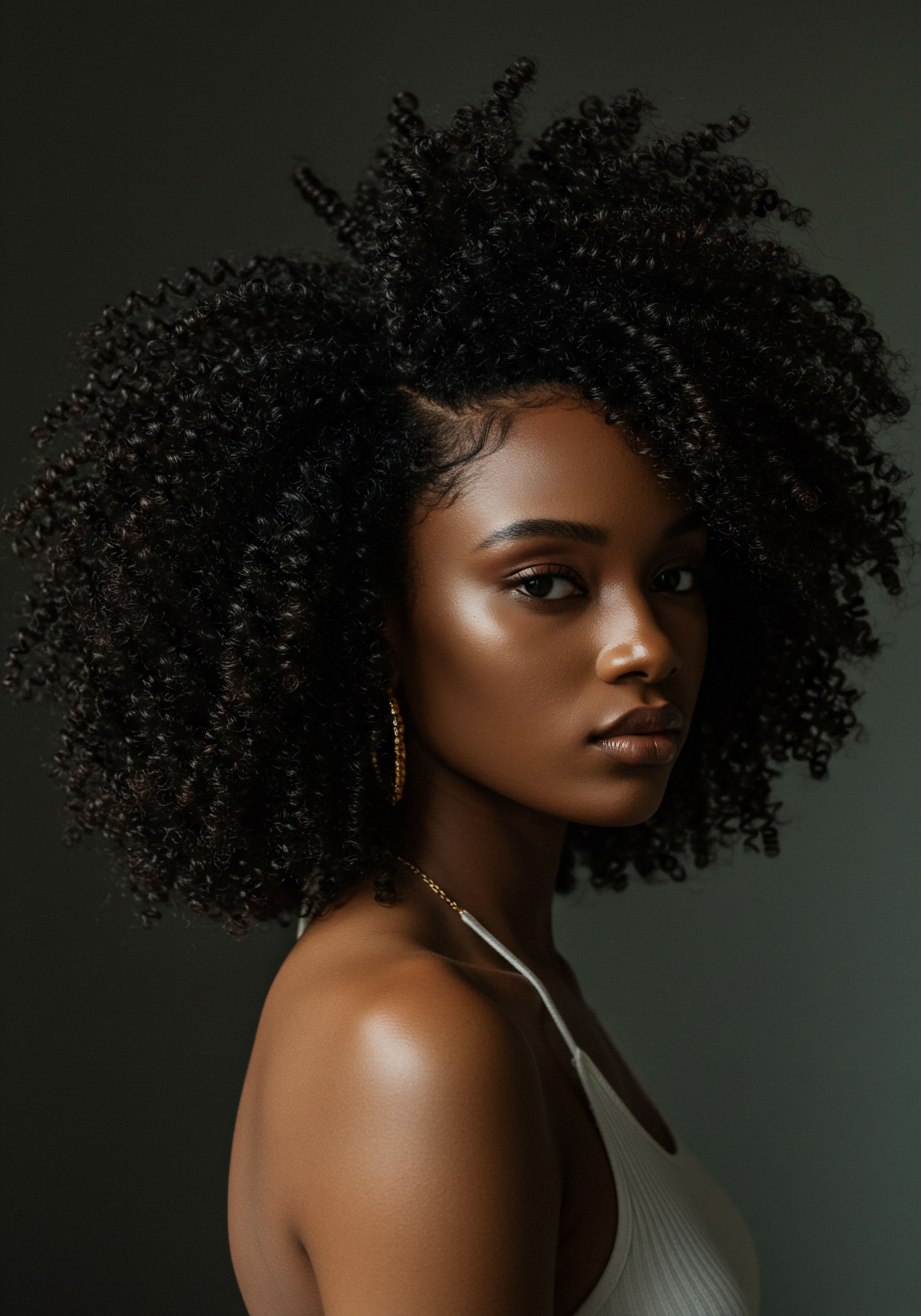
Can Nightly Conditioning Truly Boost Strand Strength?
Yes, the consistent application of appropriate conditioning treatments before sleep can indeed contribute to increased strand strength, particularly for coiled hair. During sleep, the hair is less exposed to friction, manipulation, and environmental stressors, allowing conditioning agents more time to penetrate and work undisturbed. When paired with the body’s natural protein synthesis processes, this creates a synergistic effect.
The lipids and humectants in conditioners help to seal the cuticle, reducing moisture loss and improving elasticity, while the body works to rebuild internal structures. This combination leads to a more robust, resilient strand, less prone to breakage and more capable of holding its coil pattern.
Consider a hair shaft that has been subjected to daily stressors. The cuticle layers may be lifted, and the internal protein bonds weakened. A rich, overnight conditioner, applied when the body is in a state of repair, can help to smooth those cuticles and provide the necessary building blocks for repair. The gentle warmth from the scalp and the prolonged contact time facilitate deeper absorption, leading to tangible improvements in softness, flexibility, and overall integrity.
| Hormone Influence Growth Hormone promotes protein synthesis. |
| Hair Benefit Increased keratin production and repair. |
| Suggested Nighttime Practice Overnight protein treatments or masks. |
| Hormone Influence Melatonin provides antioxidant protection. |
| Hair Benefit Reduced oxidative damage to follicles. |
| Suggested Nighttime Practice Scalp massages with antioxidant-rich oils. |
| Hormone Influence Lower Cortisol allows cellular repair. |
| Hair Benefit Reduced inflammation, improved follicle health. |
| Suggested Nighttime Practice Gentle detangling, protective styles to minimize stress. |
| Hormone Influence Aligning hair care with sleep's hormonal cycles enhances strand resilience. |

Protective Styling for Nighttime
Beyond product application, the physical protection of coiled strands during sleep is paramount. Friction against cotton pillowcases can lead to dryness, tangling, and breakage, undermining the very strength that sleep hormones are working to build. Implementing protective styles and using appropriate sleep accessories minimizes mechanical stress, allowing the hair to retain moisture and maintain its structural integrity throughout the night.
- Satin or Silk Bonnets ❉ These smooth fabrics reduce friction between hair and bedding, preventing moisture loss and minimizing frizz and tangles.
- Pineapple Method ❉ Gathering hair loosely on top of the head reduces compression and preserves curl patterns, preventing stretching and breakage at the roots.
- Loose Braids or Twists ❉ These styles keep strands contained, reducing friction and preserving moisture, especially beneficial for longer coiled hair.
The choice of protective style should always prioritize comfort and gentleness. The aim is to create an environment where the hair can rest undisturbed, allowing the natural repair processes, bolstered by hormonal activity, to proceed without impediment. This mindful approach to nighttime care becomes a quiet celebration of our hair’s innate beauty and resilience.
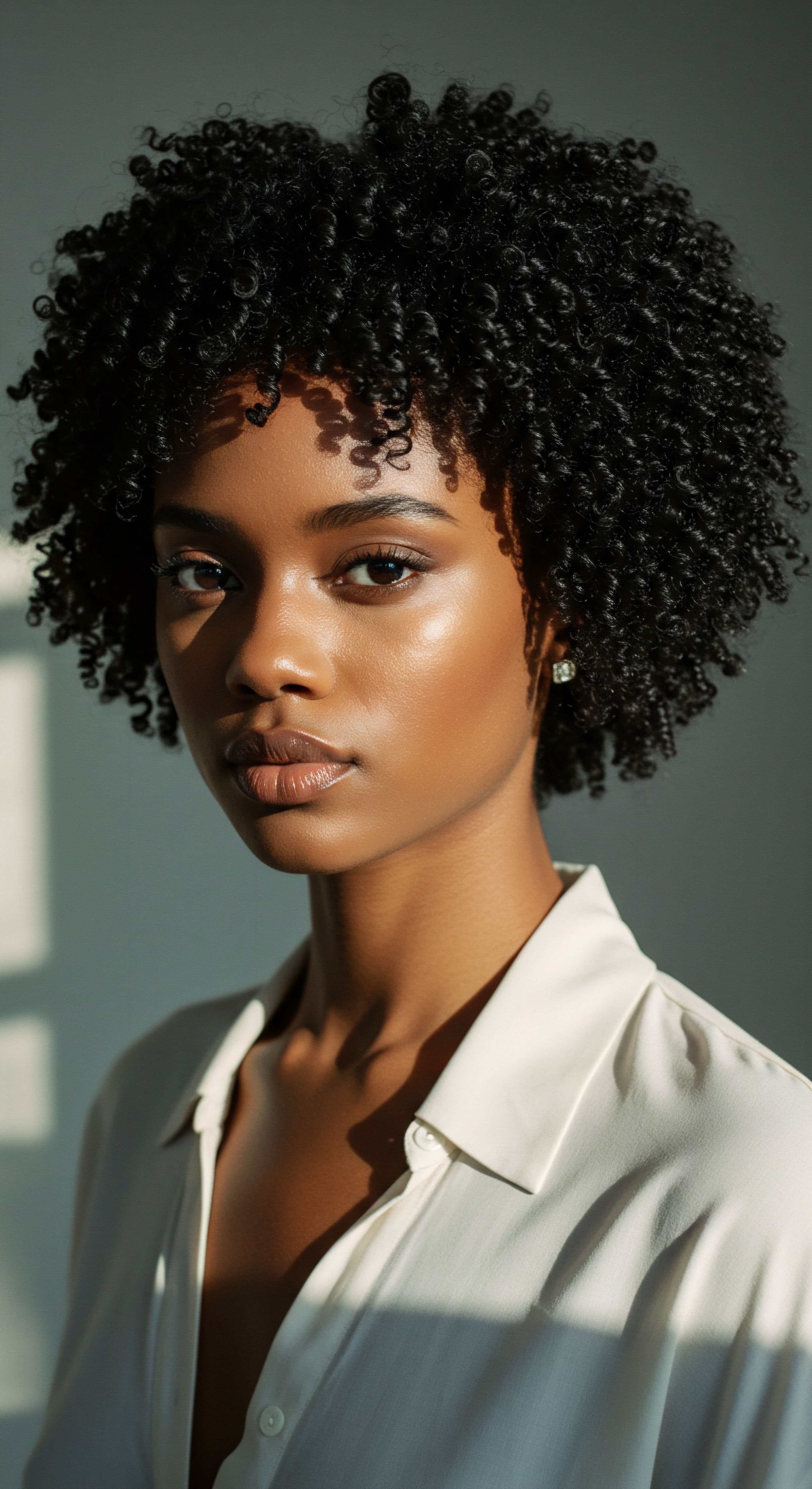
Relay
Our contemplation now deepens, moving beyond the direct influences of sleep hormones to consider the intricate network of factors that ultimately dictate the strength and vibrancy of coiled strands. The body’s internal chemical signals do not act in isolation; rather, they participate in a complex dialogue with our broader lifestyle choices, our genetic blueprint, and even the subtle whispers of our ancestral heritage. To truly comprehend how sleep hormones contribute to hair strength, we must appreciate this wider interconnectedness, recognizing that the coiled strand is a testament to both biological precision and lived experience.
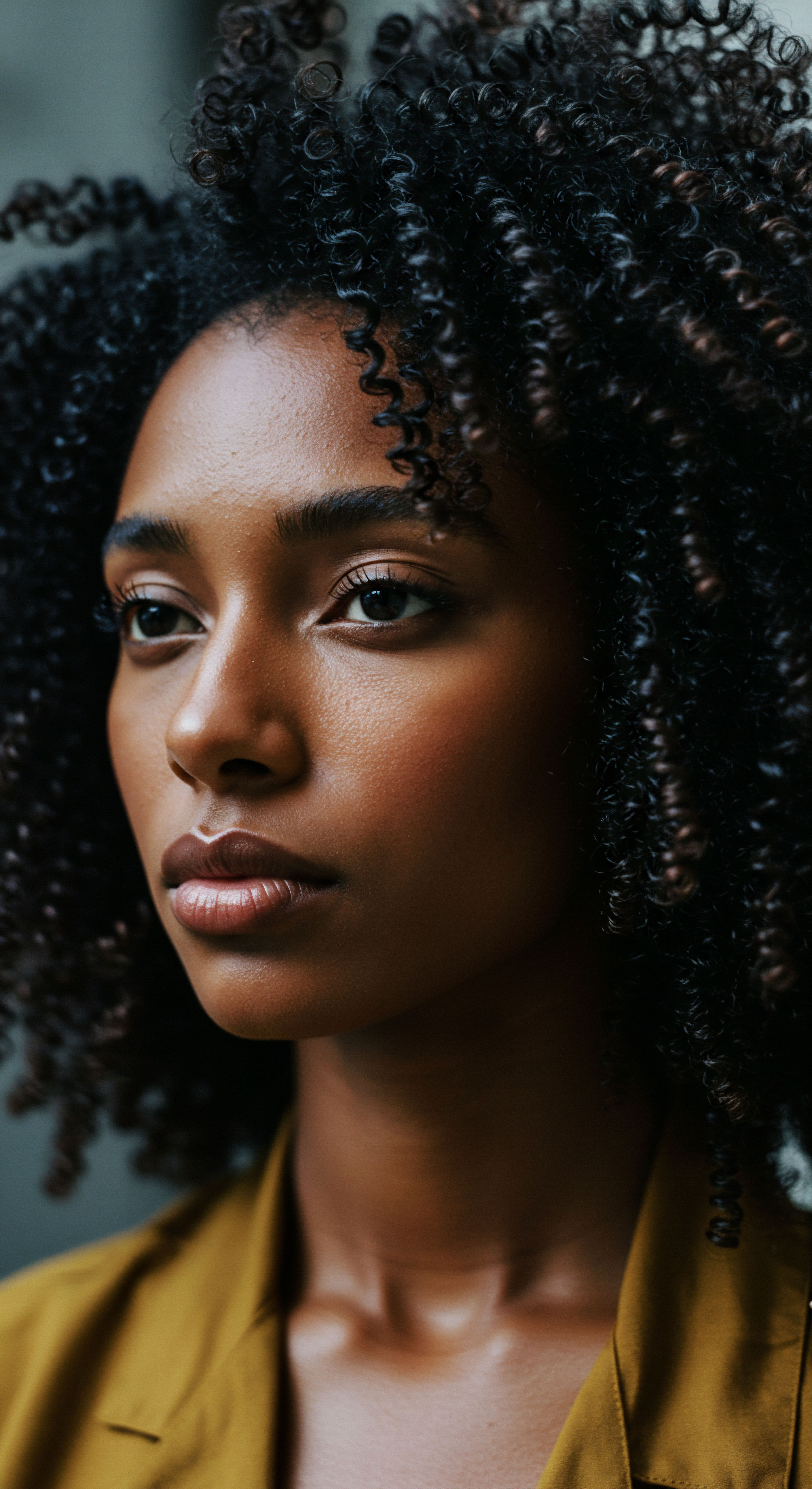
The Interplay of Hormones, Genetics, and Lifestyle
While melatonin and growth hormone offer significant contributions during sleep, their efficacy is often mediated by an individual’s genetic predispositions and overall health status. The unique elliptical shape of the hair follicle in coiled hair, for instance, is genetically determined, influencing how keratin proteins align and thus the strand’s inherent strength and curl pattern. Hormonal signals act upon this existing genetic architecture, optimizing its function. A lifestyle that consistently disrupts sleep patterns, however, can create a hormonal imbalance that negates these benefits, regardless of genetic potential.
Chronic sleep deprivation, for example, is known to elevate baseline cortisol levels and suppress growth hormone secretion, disrupting the very restorative processes vital for hair health. This sustained hormonal imbalance can lead to a compromised hair cycle, potentially shortening the anagen (growth) phase and leading to thinner, weaker strands more prone to breakage.
Sleep hormones are part of a larger system, with their effects on hair strength mediated by genetics and daily lifestyle choices.

Circadian Disruption and Hair Vulnerability
The body’s internal clock, the circadian rhythm, dictates the release patterns of many hormones, including those relevant to sleep and hair growth. When this rhythm is disrupted, say by shift work, inconsistent sleep schedules, or prolonged exposure to artificial light at night, the delicate balance of these hormonal signals can be thrown askew. The consequences for hair, particularly for already vulnerable coiled textures, can be profound.

How does Irregular Sleep Impact Hair Integrity?
Irregular sleep patterns can significantly compromise hair integrity by disrupting the natural ebb and flow of hormones critical for follicle health. A compelling study published in the journal Experimental Dermatology in 2017, titled “Hair Follicle Clock ❉ The Hair Cycle Is Controlled by a Circadian Clock and Melatonin,” shed light on this intricate connection. Researchers demonstrated that human hair follicles possess their own intrinsic circadian clock genes, and that melatonin, a key sleep hormone, acts as a critical synchronizer for these follicular rhythms. When the body’s broader circadian rhythm is disturbed by inconsistent sleep, this internal follicular clock can become desynchronized.
This desynchronization can lead to a premature entry into the catagen (transition) phase or telogen (resting) phase, shortening the active growth period. The result is hair that spends less time in its robust growing phase, potentially leading to increased shedding, reduced density, and strands that are inherently weaker because they haven’t had adequate time for full maturation and keratinization. This effect is particularly impactful on coiled strands, which rely on optimal growth cycles for their structural integrity and resistance to breakage.
The study further indicated that the disruption of these rhythms could impair the follicle’s ability to repair itself and produce high-quality keratin. For coiled hair, which often has an uneven distribution of keratin along the shaft, any impairment in its production can exacerbate existing fragilities. The hair may feel drier, appear duller, and be more susceptible to mechanical damage. This underscores the subtle yet powerful influence of consistent, restorative sleep on the very core of hair strength.

Beyond the Strand ❉ Scalp Health and Hormones
The strength of a coiled strand is not solely determined by the strand itself; it is deeply rooted in the health of the scalp, the living ground from which hair grows. Hormones influence scalp microcirculation, inflammation, and sebum production, all of which indirectly impact hair strength. A healthy scalp environment, supported by balanced hormonal activity during sleep, provides the optimal conditions for follicles to produce their best work.
For instance, imbalances in cortisol due to poor sleep can lead to increased inflammation on the scalp, potentially irritating follicles and impeding nutrient delivery. Conversely, adequate sleep allows for the natural anti-inflammatory processes to occur, promoting a calmer, more receptive scalp environment. This holistic view acknowledges that true hair strength originates not just from what we apply externally, but from the harmonious internal workings of our body.
| Sleep Quality Factor Consistent Deep Sleep |
| Hormonal Impact Optimal Growth Hormone release. |
| Hair Strength Outcome Enhanced keratin synthesis, thicker strands. |
| Sleep Quality Factor Regular Sleep Schedule |
| Hormonal Impact Synchronized follicular circadian rhythms. |
| Hair Strength Outcome Longer anagen phase, reduced shedding. |
| Sleep Quality Factor Reduced Nighttime Stress |
| Hormonal Impact Lower nocturnal Cortisol levels. |
| Hair Strength Outcome Less scalp inflammation, improved follicle function. |
| Sleep Quality Factor Adequate Sleep Duration |
| Hormonal Impact Sustained Melatonin antioxidant activity. |
| Hair Strength Outcome Protection against oxidative damage, stronger hair. |
| Sleep Quality Factor Prioritizing quality sleep supports hormonal balance for robust hair. |
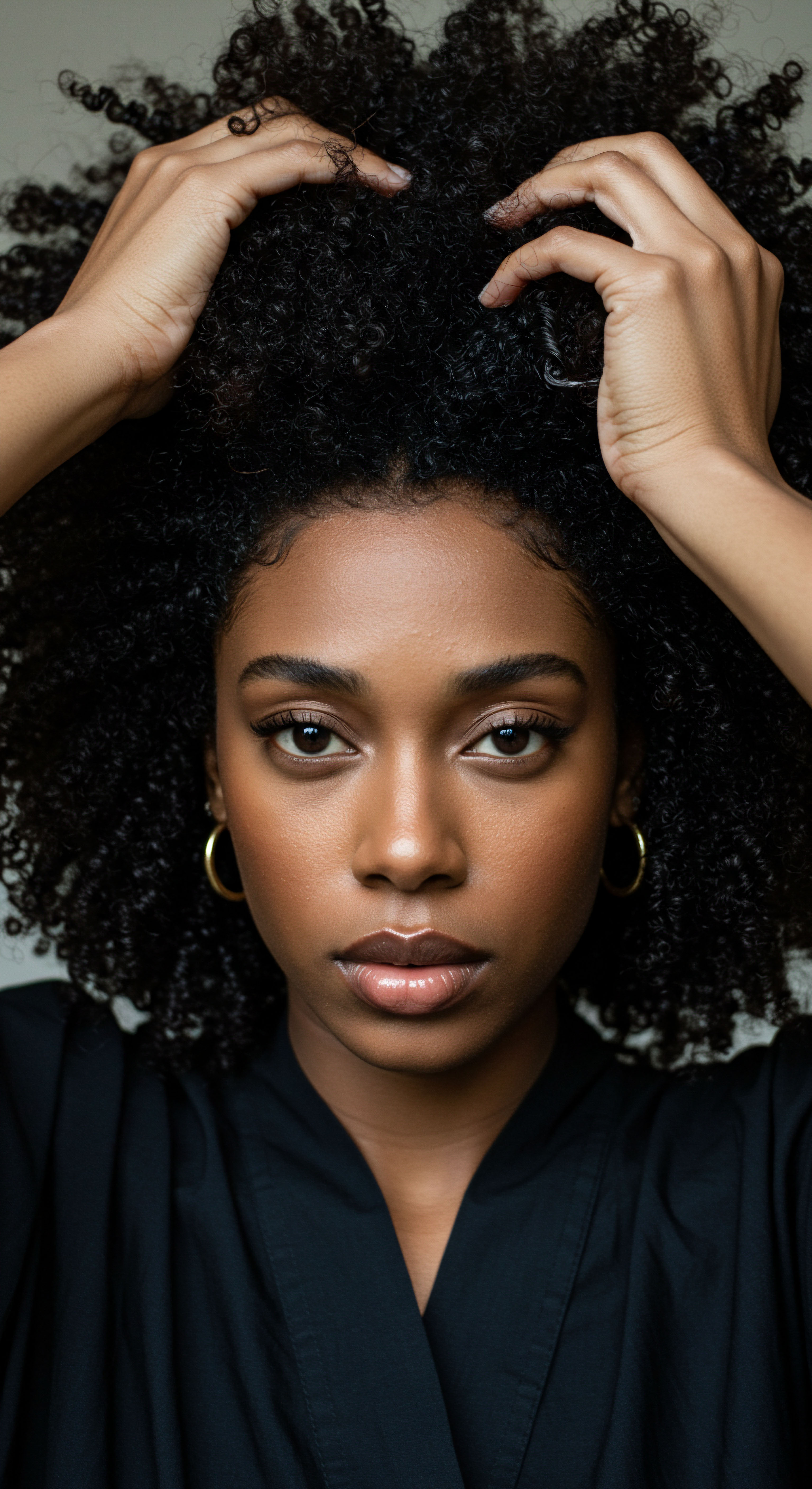
Reflection
The journey into understanding how sleep hormones influence the strength of coiled strands opens a window onto the profound interconnectedness of our well-being. It reminds us that beauty, particularly the vibrant health of our hair, is not merely a superficial adornment but a reflection of deeper internal harmony. The delicate dance of hormones during our quiet hours of rest offers a powerful, yet often overlooked, opportunity to cultivate resilience from within. As we embrace this wisdom, our care for coiled hair transforms from a routine into a mindful practice, a gentle acknowledgment of the body’s inherent capacity for renewal and strength.

References
- Paus, R. et al. “Hair Follicle Clock ❉ The Hair Cycle Is Controlled by a Circadian Clock and Melatonin.” Experimental Dermatology, vol. 26, no. 8, 2017, pp. 696-702.
- Fischer, T. W. et al. “Melatonin and Hair Follicle ❉ A Review.” Journal of Pineal Research, vol. 34, no. 1, 2003, pp. 1-11.
- Headington, J. T. “Telogen Effluvium ❉ New Concepts and Review.” Archives of Dermatology, vol. 129, no. 3, 1993, pp. 356-363.
- Randall, V. A. “Androgens and Hair Growth.” Dermatologic Therapy, vol. 15, no. 1, 2002, pp. 7-19.
- Hardman, J. G. et al. Goodman & Gilman’s The Pharmacological Basis of Therapeutics. 11th ed. McGraw-Hill, 2006.
- Tobin, D. J. “Biology of Hair Follicles.” The American Journal of Pathology, vol. 162, no. 4, 2003, pp. 1159-1174.
- Rees, J. L. “The Genetics of Hair Colour and Follicle Cycle.” Journal of Investigative Dermatology, vol. 126, no. 7, 2006, pp. 1435-1437.